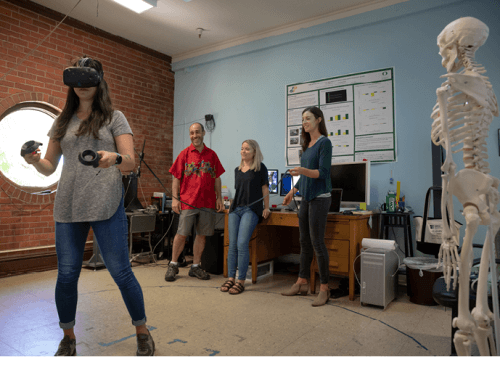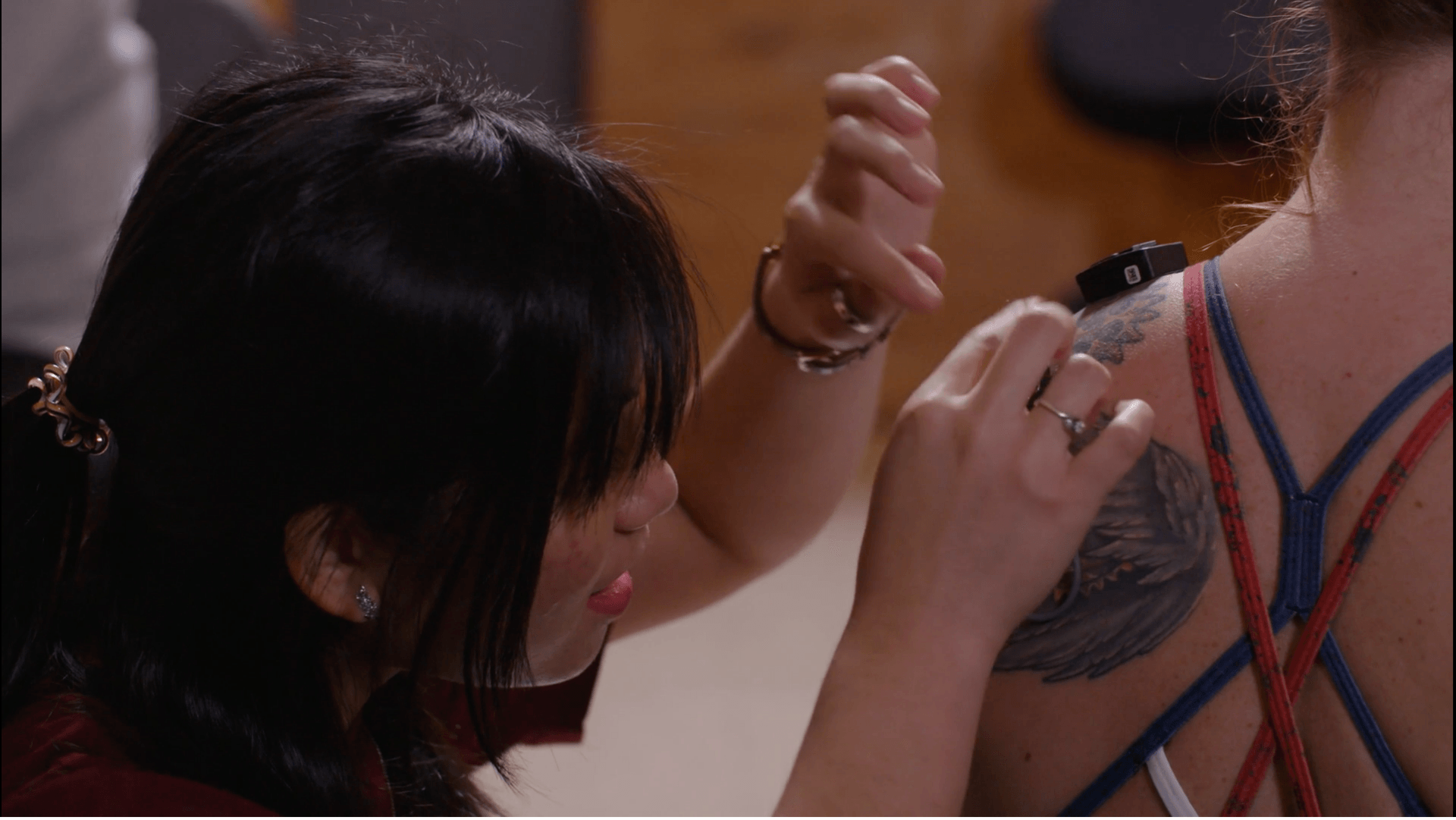Overuse Injuries/Injury Prevention: Biomechanical metrics to improve performance and reduce elbow injuries in baseball
Project Description: This project will identify relationships between elbow varus torque and performance, and physical modifiable characteristics of muscle performance and stability in pitchers. Additionally, it will characterize the dose-response relationship between elbow varus torque and ball velocity, and determine how that relationship is mediated by physical modifiable characteristics of muscle performance and stability in pitchers.
Investigators: Lori Michener, Andrew Karduna
The role of vision in joint position sense tasks
Project Description: The aim of the present study is to investigate the effect of visual manipulations on movement outcomes in a shoulder joint position sense task paradigm. A fully immersive virtual reality (VR) system is used to provide guidance through the protocol, sensory manipulation, and measurement of kinematic data.
Investigators: Kate Spitzley, Andrew Karduna
Current Research Funding
PAC-12 Student-Athlete Health and Wellness Grant
Project Title: “Overuse Injuries/Injury Prevention: Biomechanical metrics to improve performance and reduce elbow injuries in baseball”
Project Description: This project will identify relationships between elbow varus torque and performance, and physical modifiable characteristics of muscle performance and stability in pitchers. Additionally, it will characterize the dose-response relationship between elbow varus torque and ball velocity, and determine how that relationship is mediated by physical modifiable characteristics of muscle performance and stability in pitchers.
Microsoft Mixed Reality Academic Seeing Program
Previous Research Funding
–
Peter O’Day Fellowship in Biological Sciences
Project Title: “The role of handedness in visuoproprioceptive tasks”
Project Description: This project works to quantify the influence of dominance on vision and proprioception to further understand the visuoproprioceptive neural pathway.
R01, National Institutes of Health (National Institute of Arthritis and Musculoskeletal and Skin Diseases)
Project Title: “Neurophysiology of weakness and exercise in rotator cuff tendinopathy”
Project Description: The long-term goal of our research agenda is to identify the mechanisms associated with rotator cuff tendinopathy (impingement syndrome) and subsequently evaluate novel treatment strategies that address these mechanisms. The objectives of this application are to study the muscle patterns in patients with rotator cuff tendinopathy as well as the effects of both pain and exercise on these patterns. Our first hypothesis is that pain relief from a shoulder injection will result in increased rotator cuff actiity. Our second hypothesis is that patients with tendinopathy will demonstrate improved rotator cuff muscle activity following a six-week exercise program and that this improvement will be higher in patients that respond favorably to treatment. Our final hypothesis is that patients with cuff tendinopathy will show decreased rotator cuff activity compared to healthy subjects. We plan on addressing these hypotheses using several novel techniques for muscle activity assessment.
2021
— Congrats to Jennie Cooper for successfully defending her Doctoral Dissertation titled “Subacromial shoulder pain: a look at acute muscle pain,
acute relief of chronic pain, and an electromyography normalization
technique..”
— Congrats to Holly Rittenberry for successfully defending her Master’s project titled “The Relationship of Torso Angle and Shoulder Muscle Activity.”
2019
— Congrats to Marlene Loui and Kieley Trempy for successfully defending their undergraduate theses.
— Congrats Kate Spitzley for successfully defending her Master’s projects titled “Validation of the HTC VIVE VR system for kinematic data collection” and “The role of vision in joint position sense tasks.”
2018 — Congrats Jennie Cooper for successfully defending her Master’s project titled “Role of the rotator cuff in load stabilization.”
2017 — Congrats Jacqlyn for successfully defending her dissertation titled “Sensorimotor abnormalities in chronic subacromial pain: the influence of sex, contributions of pain, and utility of using the contralateral limb as a control,” and Dave Phillips for successfully defending his dissertation titled “Supraspinatus contribution and proprioceptive behavior at the shoulder.”
2015 — Congratulations Yin-Lang Lin for successfully defending her dissertation titled “The Effects of Exercise Training on Shoulder Neuromuscular Control.”
2013 — Congratulations Luke Ettinger for successfully defending his dissertation titled “The Influence of Subacromial Pain on Scapular Kinematics, Muscle Recruitment and Joint Proprioception.”



